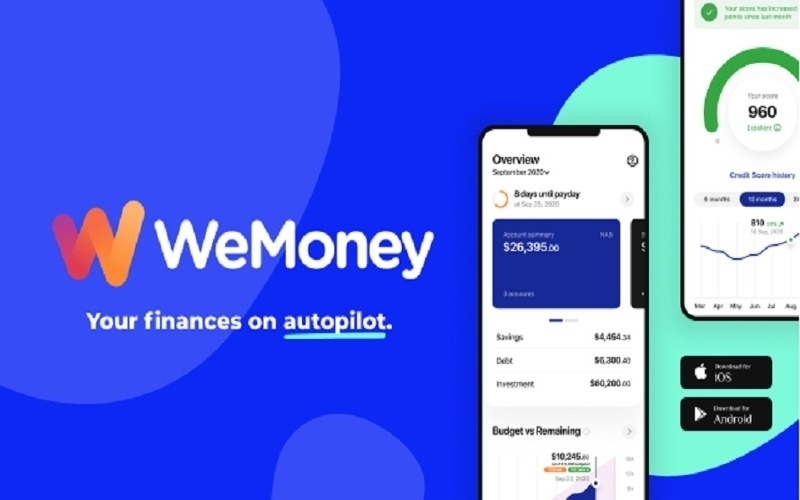The essence of the 2024 Federal Budget is dominated by crowing about cost-of-living support.
Otherwise, it's a fairly milquetoast, restrained budget with few surprises around handouts for the average punter.
A lot of it seems like Groundhog Day - think rent relief and energy bill rebates.
Much of the key 'personal finance' policy items have already been teased out or made big news in the past few weeks, including:
- The already legislated 'stage three' income tax cuts, which barely cover income tax bracket creep over the past few years
- $3 billion in HECS-HELP indexation relief, including a backdated credit and shifting the way the student debts are indexed to the lower of wage price growth or inflation - indexation added $2.1 billion to government coffers this financial year; this will drop to $1.34 billion next financial year.
- Parental leave to now include superannuation
- The National Housing Accord's target of building 1.2 million homes by 2029 - half a billion dollars will be spent in 2024-25.
On the top point, personal income tax collection is expected to increase a further $26 billion over the next five years despite the tax cuts, aided by a strong labour market, population growth, and wages growth.
The tax cuts have handed about 20 percentage points' worth of income tax bracket creep back to punters than would have been if the cuts had not been there.
@savings.com.au 💰 FEDERAL BUDGET: What you need to know 💰 Finance journo Harrison Astbury is out of the Canberra media lock-up with all the goss on the nation’s finances ⭐️ What are your thoughts? Drop your questions below! 👇 #budget #federalbudget #auspol #ausfinance #fintok #parliament ♬ original sound - Savings.com.au
Debt, deficit, and surplus
Broadly, the budget surplus experienced in 2022-23 is now narrower, at $9.3 billion predicted for 2023-24 - in-line with expectations.
Tricky 'mark to market' accounting measures mean various policy items can be held "off balance sheet", and ostensibly budget surpluses would have been non-existent without.
Ill-fated energy company Enron used mark-to-market accounting and look where that got it.
Gross government debt for this financial year is expected to be $904 billion.
Despite the government crowing about "restraint" and "responsible financial economic management", this will tip over the $1 trillion mark in 2025-26 and top $1.1 trillion in 2027-28.
As a percentage of GDP, that will go from 33.7%, to 35.1%, and then back down to 34.9% through the 2028 financial year as the economic malaise starts to turn.
While the rate of debt growth has been arrested from forecasts in previous financial years, debt has real-world consequences.
Someone with a tax bill of $20,000 per year (about the 'average' tax paid on a full-time wage) pays more than $700 of that towards interest on government debt.
The rate of growth on interest paid on government debt is now faster than NDIS spending.
Treasurer Jim Chalmers will be banking on interest rates to ease over the coming years so this doesn't risk further blow outs.
Treasury expects GDP growth to be just 2% in this upcoming financial year, before boosting by a quarter of a percentage point each financial year through 2027.
The unemployment rate is expected to peak at 4.5% over the next three financial years, while inflation is expected to proportionately slow to 2.75%.
These figures show that the government's bullish inflation figure is largely contingent on sluggish economic growth and a rise in unemployment, trending a little more negative than RBA forecasts.
$300 energy bill rebate
From 1 July 2024 an estimated 10 million households will receive an energy bill rebate of $300.
Small businesses can receive up to $325.
These are expected to be delivered over the proceeding few months and, like previous years, will apply directly to the customer's energy bill, confirmed by Treasurer Chalmers to the Press Gallery.
For example, if billed quarterly, customers will receive $75 per quarter.
It's estimated to cost the budget $3.5 billion.
This adds to various state government initiatives, such as Queensland's $1,000 rebate.
Budget documents estimate federal energy bill initiatives have reduced headline inflation by half a percentage point this financial year.
Underlying inflation - what the RBA looks at - would cut through the noise and omit these short-term price impacts.
Higher rates of Jobseeker for some
The government is extending eligibility for the existing higher base rate of the JobSeeker Payment to single JobSeeker Payment recipients with an assessed partial capacity to work between zero and 14 hours per week.
Combined with a higher rate of the Energy Supplement this will provide an increase of at least $54.90 per fortnight for these recipients - estimated to be around 5,000.
It's designed to address a gap in the welfare net, for those "with barriers to employment who have limited or no capacity to work due to their condition - but who do not qualify for Disability Support Pension".
This will apply from 20 September 2024 - the usual time JobSeeker and social services payments are indexed to inflation.
The higher JobSeeker payment rate is currently provided to single recipients with dependent children and those aged 55 and over who have been on the payment for nine continuous months or more.
The aim is to soften the cost-of-living blow to those underemployed - those employed but seeking more hours than they can get. Underemployment currently tracks about two to three percentage points higher than the unemployment rate.
Underutilised labour force participants affects about one-in-10 of the labour force.
Boosted rent assistance and market reform
Commonwealth Rent Assistance will be boosted by a further 10%, adding to the 15% announced in September 2023.
For a single parent with one or two children, the rate will have been boosted by $70 a fortnight since May 2022.
This round of rent assistance applies to approximately one million households and will cost the budget about $1.9 billion.
The government is also expected to introduce federal minimum rental standards market-wide. This will also see a more unified approach in what constitutes reasonable grounds for eviction, and the government will also seek to limit rent increases to once per year.
Super on Paid Parental Leave
Without a doubt one of the biggest policy tweaks for parents will be adding superannuation payments onto the paid parental leave scheme.
Under the scheme, parents - regardless of gender - can access up to 20 weeks' paid parental leave, and this can be distributed to each parent how they wish.
The government will provide $1.1 billion to make superannuation guarantee (SG) equivalent payments on their government-funded Paid Parental Leave (PPL).
So far, detail on delivery of these items is light - expect more information in the coming days and weeks.
Advertisement
Need somewhere to store cash and earn interest? The table below features savings accounts with some of the highest interest rates on the market.
Image coutesy of Jim Chalmers on X







 Denise Raward
Denise Raward




